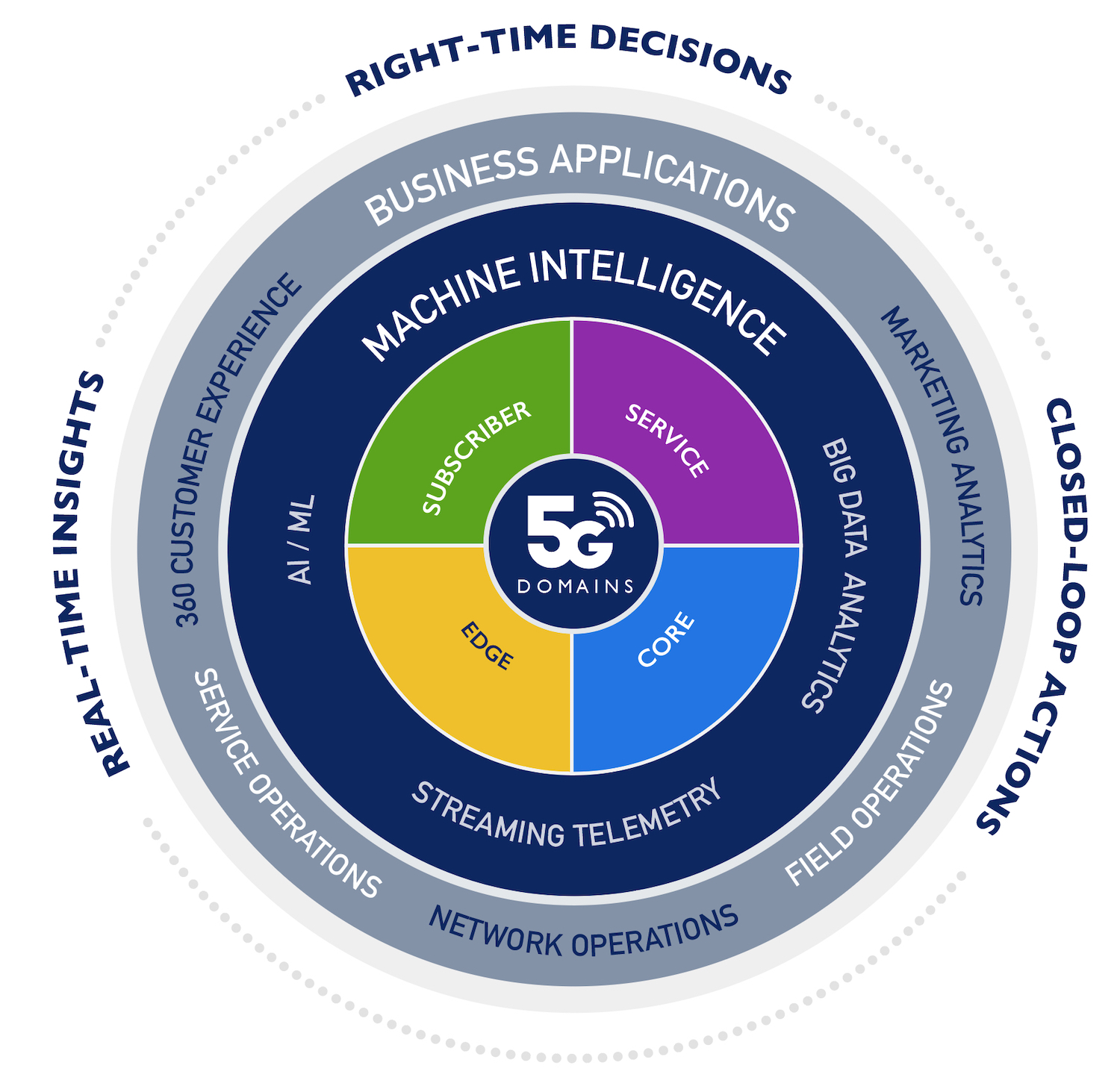Mastering 5G Complexity with AI and ML
Edge Domain Challenges
Compared to the 4G edge, the 5G edge will be highly dense, diverse and dynamic, combining new enabling technologies in 5G products to support high-performance connections for smartphone users and smart devices, and also high-density connections for IoT devices. Deploying 5G at scale will require mastering a level of operational complexity at the edge that goes well beyond the scope of 4G.
Multi-gigabit connections will drive the need for a massive increase in 5G backhaul bandwidth, which will be supplied by optical networks to support the increase in capacity. Shifting network demand and traffic patterns will require dynamic allocation of bandwidth for fronthaul/backhaul capacity, introducing another layer of complexity.
Core Domain Challenges
The 5G core will undergo a fundamental transformation as operators adopt software-defined networking (SDN) and network functions virtualization (NFV) for service-enabling infrastructure. Early adopters are gaining experience with SDN/NFV in limited-scale deployments, but for 5G to deliver on its promise, mainstream adopters will need to master the complexity of operating this new generation of core network infrastructure.
4G and 5G are expected to co-exist for 5 to 10 years, so interworking between 4G and 5G network functions in the core is a critical requirement that further complicates network and service operations. During the period of coexistence, the installed base of smartphone subscribers must be able to roam seamlessly between areas of 4G and 5G coverage. It will be challenging to operate a legacy 4G network in parallel with a new 5G network while maintaining subscriber QoE across both domains.

Figure 1: 5G Decisions Chart



















